Experiment 8: Milk Fireworks, Breaking the Surface Tesion
Now you can continue altering the surface tension, dippingthe dish-soap covered Q-tip in various spots in the milk.
Making Homeschooling Hands-On, Engaging, Meaningful & Memorable! Be inspired by all the possibilities!! Check out our unit studies, packets and printables!
Now you can continue altering the surface tension, dippingthe dish-soap covered Q-tip in various spots in the milk.
We had some really interesting movement when weadded a drop of blue and red food coloring and then leta couple drops of soap drip into the milk. The kids really, really enjoyed this experiment! I highlyrecommend this one. I’ve seen this experiment in a number of places, but there’sa good explanation of the science behind it all at:http://www.abc.net.au/science/surfingscientist/pdf/lesson_1_amazing_science.pdfon pages 6-7.
Grandpa sent us a wonderful science video clipabout water drops. So, I set up this experiment togo along with the two minute video (which wewatched afterward). The experiment wasquite simple, but the kids were at it for at leasttwenty minutes! 1) Pour a pitcher of water into a dish2) Place some colored water into a small dish3) Using an eye dropper, pick up some coloredwater.4) Drop ONE drop into the...
Here’s our craft table all set up with a science station. Theseexperiments have to do mostly with magnetic attraction,although we have one on particle attraction as well. I also have the magnetic maze (a gift from a formerkindergarten teacher/friend) and a craft on the milky waygalaxy.
This is a simple lesson that shows how particles areattracted to each other. Just have them drop paper intostill water (don’t blow or move the water around) andwatch the bits of paper move toward one another. We used bits of paper from my comb binder, but anysmall pieces should work. I’ve heard that you could alsosubstitute talcum powder or baby powder, but we did nottry this.
LD and DD just played around with a magnetic set we’vehad for years. They also tried an experiment to see if heat or cold affectedthe magnet’s force. (education.com)
LD had more fun with this when I told him I was timing him. Thesecond time round he had to see if he’d beat his previous time(and he did 1min40 down to 57seconds).
Ages 2-6: Preschool and Toddler Activities / Arts and Crafts / Science Experiments
by Liesl - Homeschool Den · Published January 4, 2010
We studied the Milky Way Galaxy and planets a bit lastyear, but since this was covered in the Montessori “FirstGreat Lesson” that we presented (in our own version)over the weekend, I thought the kids might enjoy doing acouple pictures related to what we talked about. Links about the Montessori Great Lessons (geared forearly elementary aged kids): http://www.moteaco.com/albums.htmlhttp://missbarbara.net/greatlessons.htmlhttp://www.montessoricentre.com/GL/The%20Great%20Lesson%201%20-%20secular%20version.htm
Ages 2-6: Preschool and Toddler Activities / Arts and Crafts / Science Experiments
by Liesl - Homeschool Den · Published January 4, 2010
We did two art projects to show the spiral shaped, MilkyWay Galaxy. One was simply sparkles and shiny starspasted onto black paper. For the white pictures, the kids drew the Milky WayGalaxy with a white oil pastel. Then they painted overtheir drawing with black paint. We found that white oilpastels worked MUCH better for the kids than regularcrayola crayons.
We’re ready for our month of science experiments!I gathered lots of ideas, printed them out and putthem together into a little booklet. We watch a friend during the school holidays and lastJanuary we did a lot of science experiments together.The experiments were such a bit hit with all the kidslast year that we decided to spend a full month doingexperiments again this year. My goal is for the experiments to...
Experiment 1: What do ants eat? There are about 1300 different species of ants herein Australia. We’ve heard that there are more ants(by weight) in Australia than people in the world. I don’t know if that’s true, but I can tell you thatwe see streams of ants an inch thick heading upand down the side- walks in the parks andeverywhere. As an aside, DD was bit by a 1 inch...
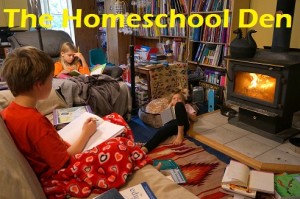
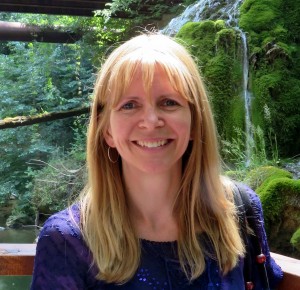
Do you believe education can be exciting, inspiring, and full of joy? We do too!
I love the quote by William Butler Yeats, "Education is not the filling of a pail, but the lighting of a fire." It's about getting the kids involved, engaged, and fired up about learning (while juggling the rest of life too!)
A bit about me: I have my Master's from Brown University. I have more than 20 years of teaching experience. I was a high school teacher for many years both in the U.S. and internationally and also taught for the University of Maryland before leaving to homeschool my 3 wonderful kids.
To read more about us CLICK HERE.
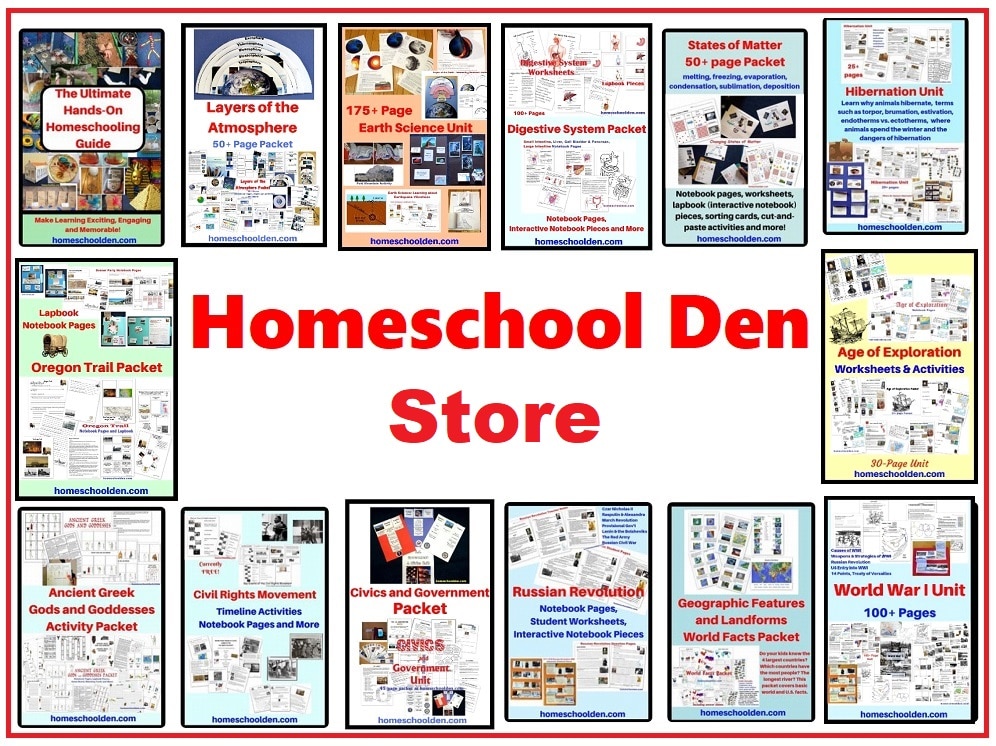
Click on the image to find out more about the units and packets we have available.
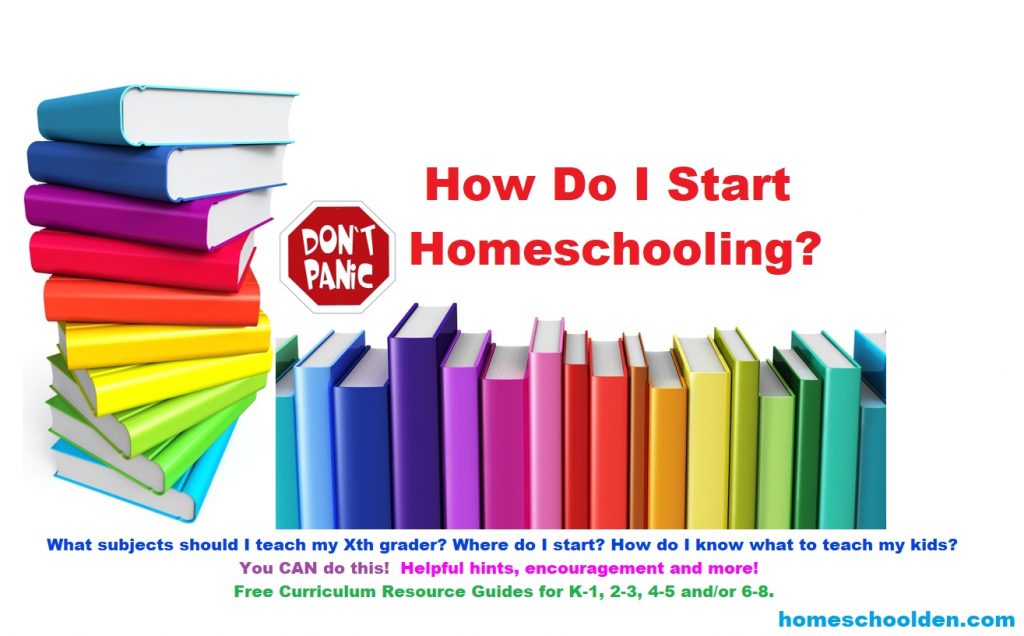
This post has links to dozens of posts and resources both for new and veteran homeschoolers for everything from finding homeschool curriculum to general homeschool advice and encouragement.
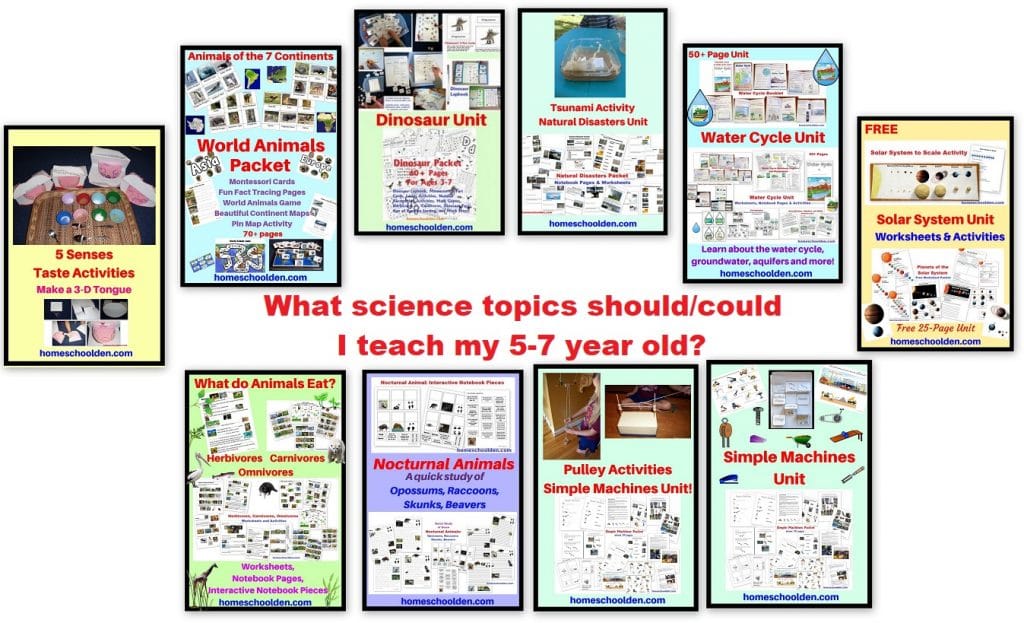
What science topics could I teach my 5-7 year old - Homeschool Science Curriculum

Click on the image above to see the Science Units we covered in our homeschool from elementary through middle school (and beyond!).
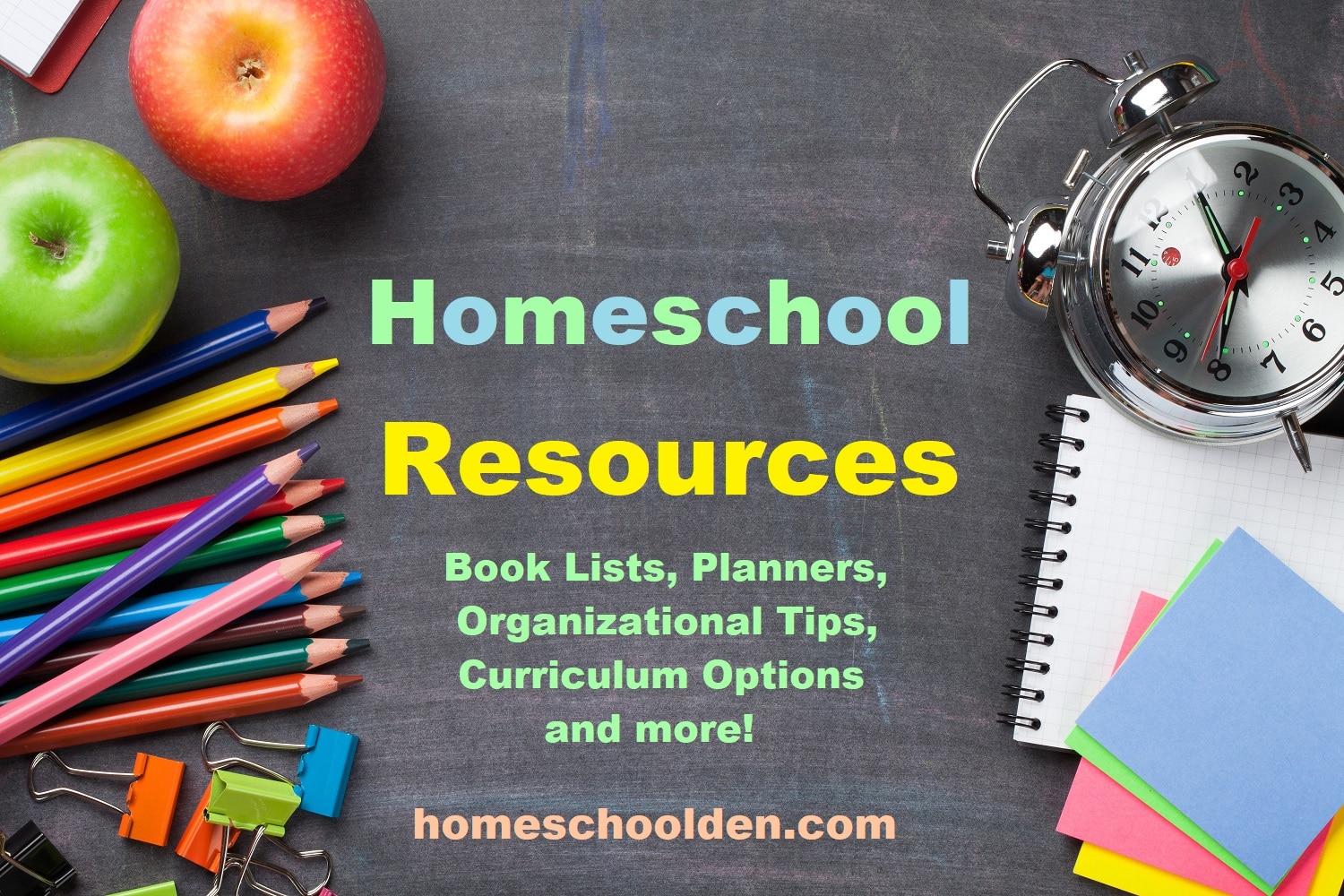
A list of the books we've used most in history, science, math, language arts, etc.
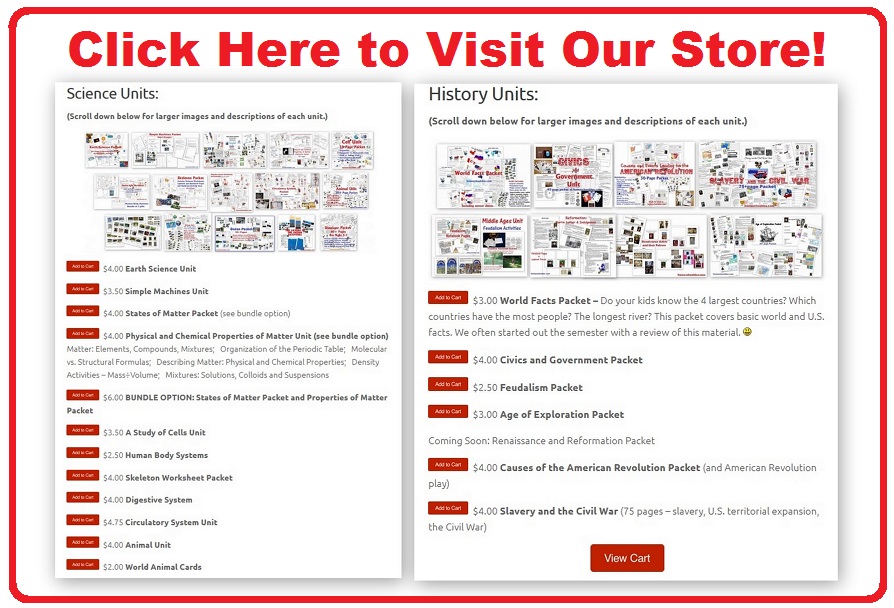

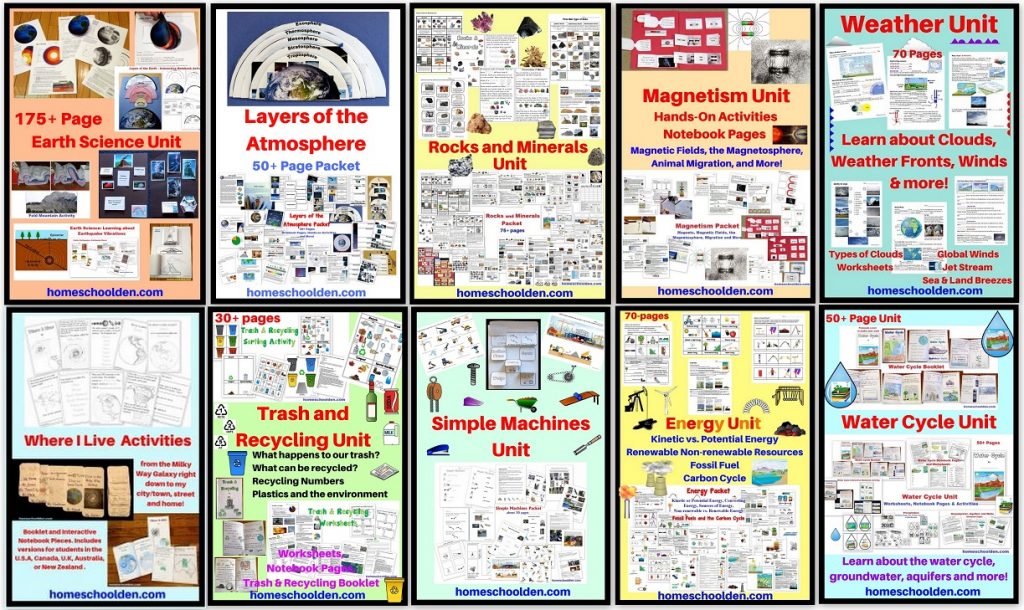
Click the image to check out our packets on Earth Science, Rocks and Minerals, the Atmosphere, Weather, Energy and More!
Units are also sold separately.
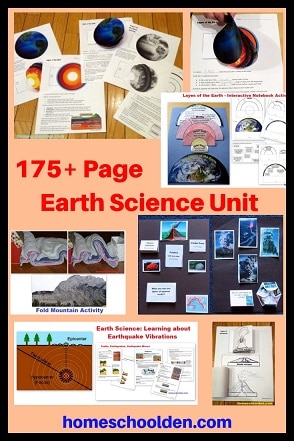
This is one of our most popular units. It covers the Layers of the Earth, Plate Tectonics, Earthquakes, Volcanoes and More! It is included in the Earth Science Bundle (see the picture/link above).
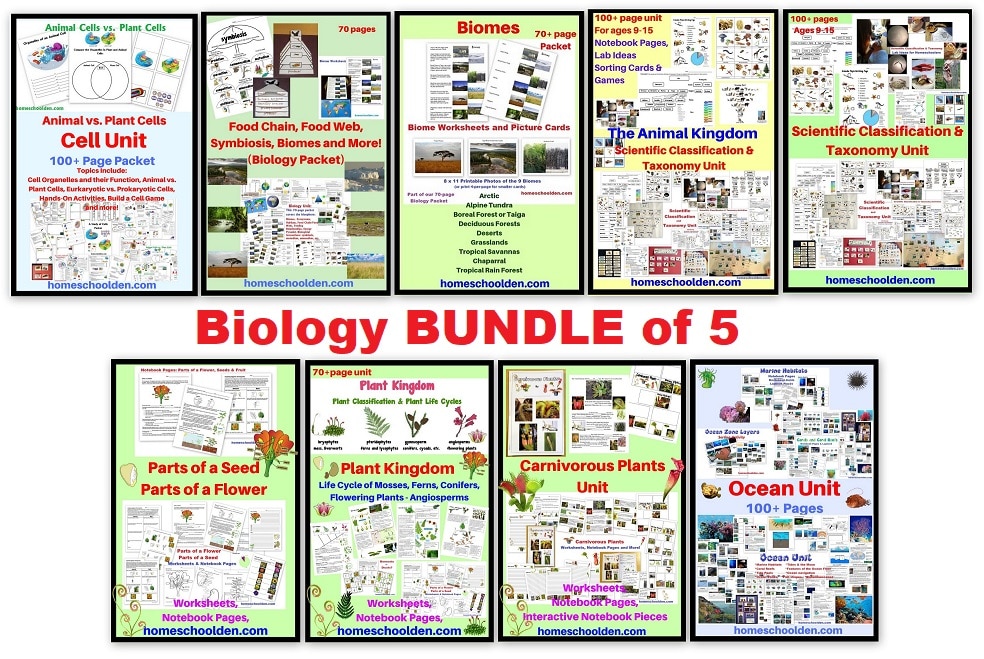
Click the image to see our Biology Units on Animal and Plant Cells; the Biology Unit on Biomes, Food Chains, Symbiosis; Scientific Classification & Taxonomy (Domain/Kingdom/Phylum/Class, etc.); Botany - Plant Kingdom and Oceans and Oceanography.
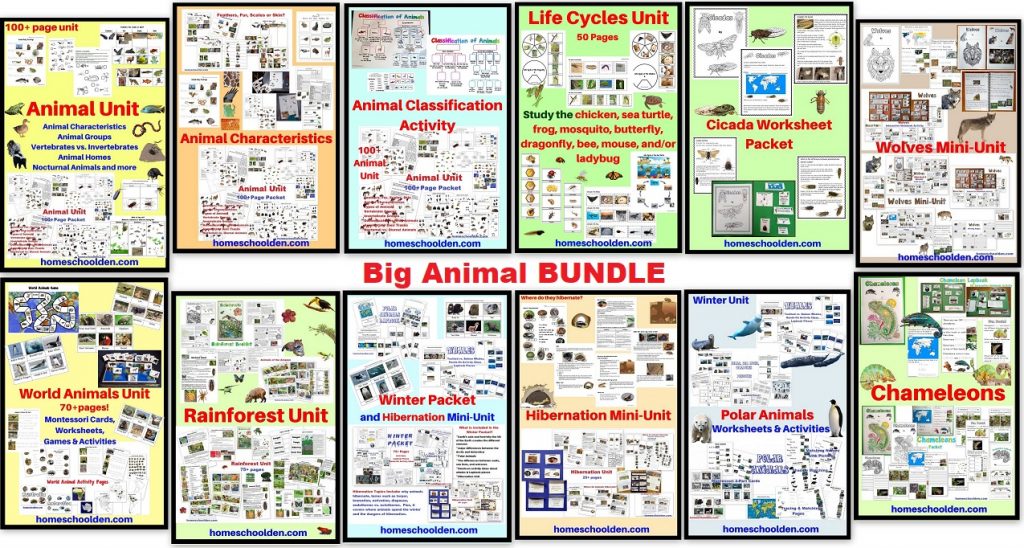
Click on the image to see our Animal Bundle - including the Animal Unit, Life Cycles, the Rainforest, Winter (Polar Animals) & Hibernation, Chameleons, Wolves, Cicadas and more!
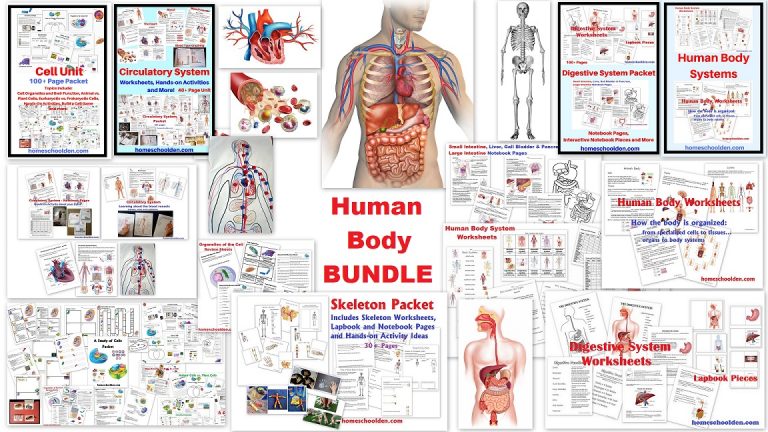
The Human Body Systems, Skeletal, Digestive, Circulatory, Muscular, Nervous, Endocrine Systems and More (with lots of hands-on activity ideas)! We usually study a different body system each year.

Click on the image to see our units on the States of matter, Properties of Matter, Electricity & Circuits, and the Chemistry Unit (Get to know the Periodic Table in a fun way!)

This is a free checklist I put together of the various science units I hope to cover in the elementary and middle school years.
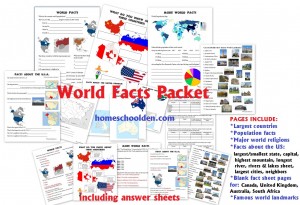
Do your kids know the 4 largest countries? Which countries have the most people? The longest river? This packet covers basic world and U.S. facts and also covers geographic features and land forms.
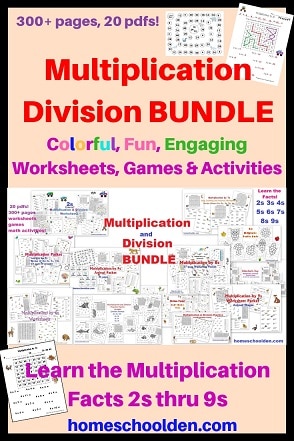
This is one of the best values we have... more than 20 PDFs with games, activities and worksheets to learn/practice the multiplication facts ($7.00).
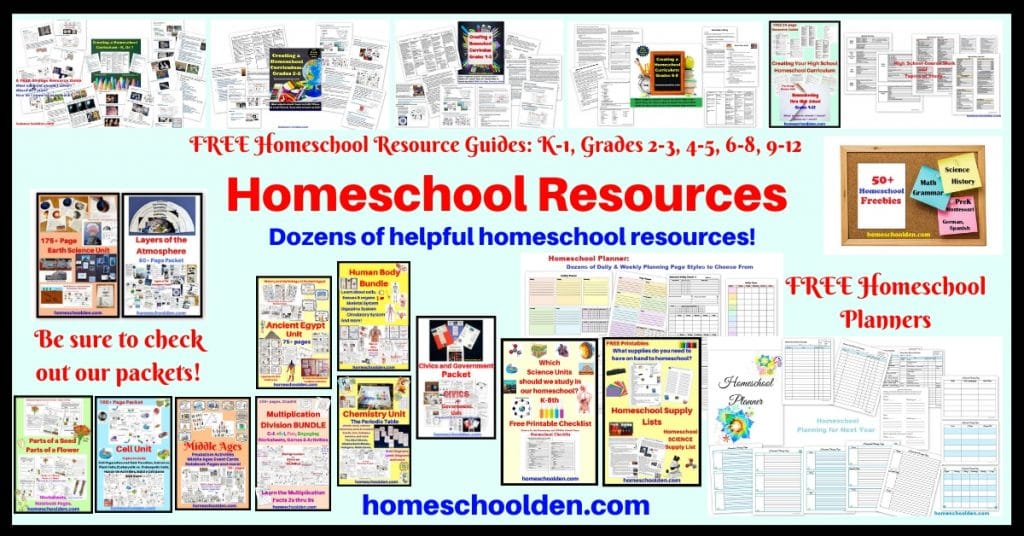
Click on the image to discover some of the pages, posts and homeschool resources within our blog that might be the most useful for you including a long list of our freebies!
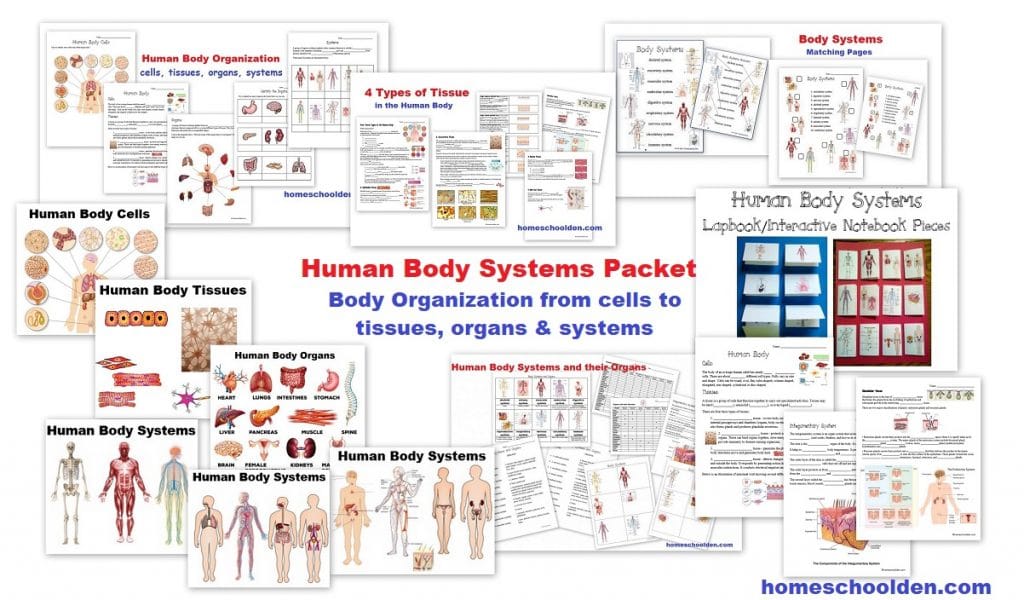
How the body is organized from cells to tissues... organs to body systems